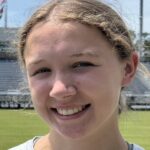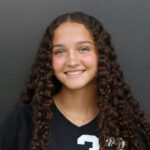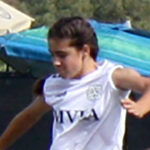A focused approach to offseason summer training
By Jennifer Schwartz
Editor’s note: Jennifer Schwartz is the owner of Impact Fitness DC, a professional private training company providing fitness services to female athletes, teams, individuals, and small groups in Washington, D.C. She holds a certified mastery in biomechanics with a specialization in resistance training and muscle activation techniques™, and is also a United States Soccer Federation-licensed coach with the Alexandria Soccer Association. Soccer Wire is very pleased to present Jennifer’s perspectives on biomechanics and injury prevention.
The months spent in the adrenaline-pumping competition of the season end all too soon for the driven athlete. When your sport is what you love, it’s just as important to keep up your skill and fitness during the offseason as it is to stay injury-free during the season. A crucial element to maintaining such elite fitness is allowing your body to restore itself when the full-steam-ahead pace of the season begins to wind down.
I am a coach and an athlete. I know both the drive for being best in your game and the implications of pushing your body too far. Through educating and rehabilitating myself – learning a lifestyle of fitness, strength, and health – I can honestly say, the best aspect of my job is playing a role in that same learning process for someone else.
My reward is that “Aha!” moment, whether it be through rewiring muscle feedback patterns while treating a client, on the sidelines as a coach, or reinforcing proper technique and loading of muscle fibers in a strength training session. It’s that moment when you can read “I get it!” on a person’s face that does it for me. All the goodies of reaching that moment are constituents of a process.
“Exercise is a process, not a program.” *
The most practical way for me to convey this message is simply to state it: For an athlete who wants to be healthy and participate in exercise that will be beneficial, not harmful, you must think of exercise as a process, not something of convenience.
The best way to begin reframing your exercise experience* is to have a working definition of movement. The RTS program breaks the concept down into series of movements – like motion picture frames in a reel. A movie is displayed by linking all these frames together at a rate of 20 per second! When you apply this same theory to how we move, we’re not simply moving from point A to B – our movement is a summation of several positions, like the single frames, linked together to create a cohesive stream.
The most scientifically valid way to improve the “snapshots” of movement lies in how the nervous system detects information from the outside world; how it then uses that information to produce a movement at any given time is based upon the muscle tissue’s capabilities.
 You, the user of the nervous system, do have some control of your muscle’s capability. The manifestation of this type of control is best utilized in a strength-training environment. You’re striving for gross movement product, the repeated performance of a skill, and it is only as good as its working pieces, each one being honed individually.
You, the user of the nervous system, do have some control of your muscle’s capability. The manifestation of this type of control is best utilized in a strength-training environment. You’re striving for gross movement product, the repeated performance of a skill, and it is only as good as its working pieces, each one being honed individually.
Increasing the speed at which information is processed within the muscular and nervous systems should be approached by improving any given tissue’s ability to respond and tolerate force with strategic exercise, not just the loading of skills. In my sessions I use isometrics and reinforcement exercises for this very purpose. We progress to skill development and sprinting after we lay the ground work with strength. Variation is typically considered to be anything and everything that is different – a somewhat haphazard approach. Traditional methods of variation yield little more than redundancy of muscle use and excessive joint wear. Strategic Variation®, however, is a principal based upon using complimentary exercises to create synergistic stimulation* – increasing the response and comprehension of one area that will lead to overall stability and strength.
This is a hard idea to sell. Society has led us to believe that results can be generated quickly, and with minimal effort. But a truly effective and adaptive program for you will involve trial and error in the beginning. The best possible outcome for athletes is through learning their own body, not just following protocol. I believe in empowering athletes through understanding how a body works and moves, then strengthening each component in a healthy way to achieve optimal performance in the end.
Tiny successes in the gym will lead to big impact on the field! Spend a little more time learning the balance of muscle and joint mechanics and you will see an increase in overall strength. Knowing your body’s optimal abilities will translate into confidence, mental clarity on the field, more success with training and a significantly increased ability to recover.
You can get there! But it will not occur in one summer. It’s better to look at each day training off the field as a building block to a life of success on the field.
“It’s the small shifts that occur out of sight, below a mountain of snow, that result in an avalanche.”
– David Hawkins, Md. PhD *
Exercise application and intention
It’s impossible to train each and every specific movement in a pattern to become stronger. To run faster, become a more agile opponent, or increase your beep test score, it’d be silly to train every millisecond of movement. We have to build the strength and tolerance of the muscle patterns to achieve our goal.
For the midfielder wanting to increase agility on their turn, I suggest they subscribe to a continuum that will strengthen the working parts of the skill and not simply practice the skill in the weight room. The first task is identifying which muscles need to participate more. The next task is to challenge those muscles (just enough) to build their tolerance over time. The final step is to reevaluate their strength and continue to challenge those muscles through Strategic Variation®*. Following this pattern will enable you to comprehend and strengthen several other patterns of movement to achieve your goals!
Another important skill for any soccer player is the ability to turn quickly on the ball. This has a lot to do with agility and skill acquisition. The simple remedy has always been to pull out the speed ladder; to command the player’s feet to move in a more agile way. The belief behind this practice is that quicker feet in that moment will transfer to the game speed—the reality is that the muscle mechanics of what is being practiced and those of the desired outcome are two different things!
It’s all about practical exercise for application. Time spent practicing fast feet on the ball will give the same results as the ladder, if not better! My approach to this process would focus on identifying limitations – whether this goal can be attained through increasing strength or awareness on the ball – then identify the potential planes of movement to improve upon, and finally work on those muscles that work advantageously in that plane.
This type of performance enhancement is for the performance-focused individual that has been developed to think clearly on the pitch, and assuming that quick turns have already been taught. If you gain anything from reading this article, let it be that sports need Sports Medicine. Participating in a sport does not guarantee a healthy status in life. Exercise should be the medicine inside Sports Medicine!*
Stay tuned! You have some work to do in the gym, follow the approach and cover your basic strength needs that will protect your joints and allow for more agile movement to be produced. My next article will focus on using strength around the joints for anaerobic conditioning – the capacity to recover from sprints more quickly.
[ +Visit the Impact Fitness website to learn more ]
*Perspectives given to me by the RTS™ program and its founder, Tom Purvis ( visit www.rts123.com for more information)
SOCCERWIRE MARKETPLACE
- Wanted Licensed Youth Soccer Coach
- Join Official Elite Summer Soccer Camps with Europe’s Top Pro Clubs!
- The St. James FC Travel Staff Coach - North (Loudoun) & South (Fairfax)
- The St. James FC Girls Academy (GA) Head Coach - 2 teams
- The St James FC Boys Travel Tryouts
- OFFICIAL BAYERN MUNICH SUMMER CAMPS U.S.
- JOIN THE ALLIANCE!
- OFFICIAL FC BARCELONA CAMPS U.S.
- The Cup San Diego - Hosted by Legends FC
- Players Wanted - Undergraduate or Post-graduate











